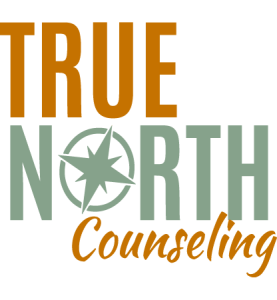How to Look Decades Younger | Healthy Aging Series: Part 15
There was a crooked man, and he walked a crooked mile,
And he found a crooked penny and he had a crooked smile,
He bought a crooked cat which caught a crooked mouse,
And they all live together in a crooked little house.
I remember the crooked man nursery rhyme. The image I got was of a man bent over shuffling along a crooked road. I saw the image of a crooked house, and the image of a crooked cat and mouse. It all seems a little nonsensical. There is a political interpretation that has to do with crookedness, as in dishonesty or “I’m not a crook” (I’m sure you get the reference.) But I’ll stick with the literal image.
When I look around in the community, much like the crooked man, I see lots of crooked people, bent over, twisted, shuffling, and often times using a cane. Or, another way of putting it is, people with poor posture. Unfortunately, poor posture is associated with being elderly.
Poor posture is a problem. One of the more obvious problems, if not superficial, is poor posture is associated with aging.
In other words, poor posture makes you look older.
My wife and I were visiting Saint Augustine a few years back and we went to a place that they called the Fountain of Youth. “Drink the water and gain eternal youth.” I’m not one of those people who wants to deny getting older. My mother taught me that there’s no better age for you, than the age that you are right now. It’s more than just vanity to want to continue looking youthful. One of the ways that you can accentuate your youthfulness is with good posture.
Problems Created by Poor Posture
Beyond this somewhat superficial problem, there are other problems that poor posture creates.
Poor posture can create mobility issues and put a person at risk for falling. When you are standing straight your body is positioned over your center of gravity. As you become more bent over, your body leans out, forward of your center of gravity. It would be similar to you taking a 10-pound dumbbell and holding it out in front of you and maintaining uprightness as you do. It puts a lot of strain on the body and puts you at risk for falling over.
Poor posture can cause back pain and other joint pain. It puts constant strain on your lower back muscles. And for those with more severe posture issues it can cause problems with your breathing by limiting the full range of motion that you need to inhale and exhale fully.
What Causes Posture Problems?
There are a few obvious answers to that question. These are habits that are usually out of our control.
- Accidents
There are times that posture problems are created from accidents. I have family members that have a difficult time standing up straight because of back injuries due to car accidents. There are genetic problems that are completely out of your control that can cause posture problems.
- Gravity
One of the more obvious problems that every human being deals with is gravity. Gravity is constantly pulling you downward.
- Aging
Another issue that we all face as we age is the lack of elasticity in our ligaments and the fragility that are bones experience as we age.
And here are the controllable, lifestyle causes for poor posture:
- Poor Postural Habits!
Poor posture is more often than not related to two or three preventable issues that we all encounter as we age. Poor posture is often-times related to poor postural habits that we practice throughout our lifetime. This is in large part due to the fact that we sit a lot, stooped over a desk, or over a steering wheel, or just simply don’t resist the effects of gravity on our body.
- Loss of Muscle Mass
Throughout our lifetime, as we age, we lose muscle mass. Of course everybody is different, but beginning in our 40s and 50s, we slowly lose muscle mass due to a decrease in growth hormone and other hormones. I mentioned this condition in other blogs related to resiliency, this condition is called Sarcopenia. Our body needs muscle in order to stand straight. Muscle and ligaments hold our joints in place. Of course I’m oversimplifying this but a loss of muscle mass contributes to poor posture.
- Loss of Muscle Strength
This involves the muscles in our core, and those muscles that contribute to mobility and stability. It isn’t just the loss of muscle mass, it’s a loss of muscle strength and endurance. It takes strong muscles to fight the never ending pull of gravity on our body.
One of the muscles that rarely gets talked about is the Transverse Abdominus muscle or TVA. This is the muscle that is the innermost layer of our abdomen and it is responsible in large part for our stability. It’s the muscle that helps hold our guts in place. And therefore it makes sense that it should be the our focus when talking about posture.
How to Have Better Posture
I was standing in front of one of the young men that I work with the other day and I’m not sure if he meant it as a compliment, but I took it as a compliment. He told me that I stand like someone in the military. It does seem to me that young men and women in the military are taught to stand up straight and suck in their gut, and push their chest out. I felt pretty good about his comment because I spend most of my waking hours focusing on my posture. I do this for several reasons but I also do it for a reason that may not be the most important, but I do it because I want to send a signal to others that one way that you can maintain a youthful look is by focusing on your posture. So, what do I do, and what can you do to improve your posture?
Note: If you have been diagnosed with Hyper-Kyphosis, consult a doctor and Physical therapist before doing any flexion exercises that cause you to bend forward. Flexion exercises can increase risk for factures to the vertebrae. Here are a list of dos and don’ts to avoid flexion stresses when exercising and activities of daily living:
- Maintain good postural alignment during exercise
- Strengthen core stabilizer muscles, such as transversus abdominus, obliques, and multifidus
- When bending or lifting objects, keep the spine in neutral, and bend at the hips and knees (hip hinge); keep objects close to the body
- When getting out of bed, roll onto the side before sitting up (log roll)
- When coughing or sneezing, stabilize trunk in neutral by hugging a pillow, or placing hands on knees while hip hinging, or place hand in small of back to help keep back in neutral
- Maintain the natural curves in your neck and back while sitting and standing. Imagine that you are lengthening through the crown of your head
- Adjust height of the walker and walk within the frame when ambulating
- Avoid seated rowing machines or upper body ergometers
- Avoid crunches, curl-ups, or flexed position (traditional sit-ups)
- Don’t twist or bend your spine when lifting objects
- Don’t sit straight up from a horizontal position
Avoid forceful trunk flexion while coughing or sneezing - Avoid leaning over towards your work, or standing in a pelvic tilt
Ok, for the rest of us, here is what you can do to insure you maintain good posture as you age.
Exercise! You need strong muscles in order to maintain good posture. I do this by resistance training and I focus on muscle strength and muscle endurance. I focus on my back muscles and my core muscles. Strengthening your back muscles, helps to pull your shoulders back and help you stand upright.
Current best-practices suggest that spine-strengthening exercises and posture training help correct posture problems with older adults.
I have pointed out in other blogs, that as you age, you need to incorporate instability into your workouts. This means narrowing your center of gravity as you do your workouts and alternating left and right plains of your body as you exercise.
Stretch! Often times our body is out of balance and that can cause posture problems. For example overly tight hamstrings, the three large muscles at the back of your thighs, and hip flexors, the muscles at the top front of your thigh, can hamper basic movements like walking and running. When muscles are tight, a common result from too much sitting, you’re not able to fully extend your legs and straighten your knees. Inflexible hamstrings have also been seen as one of the causes of lower back pain. Another common problem that stretching can address is having tight chest muscles. These muscles pull your shoulders forward giving you a hunched silhouette instead of a longer, slimmer, youthful looking you. Stretching can also address the issues of joint inflexibility. Joint inflexibility can undermine your balance which can cause life altering falls. Stretching helps with all of these problems.
Practice Good Posture! One of the exercises that I do often is activating my TVA. I stand up, and then pull my belly button in toward my backbone. This is what some call “sucking in your gut.” Practicing good posture also means sitting up straight. It means limiting the amount of time that you sit.
One of the things that has affected my posture over the years is my drive out to Colorado to visit family. I love those long road trips, but sitting that long, 17 or 18 hours straight, wreaks havoc on my lower back and on my posture.
There is no Fountain of Youth! But there are ways of maintaining your youthful appearance. And ways of avoiding the negative consequences of poor posture. Start working on them now!
This is part fifteen in the Healthy Aging Series, written by Mark Neese, LCSW, BCBA. To see more entries in this series, click here.




 Rommie Oshrieh is Co-Founder/Owner of Sage Support Services and True North Counseling.
Rommie Oshrieh is Co-Founder/Owner of Sage Support Services and True North Counseling. 







